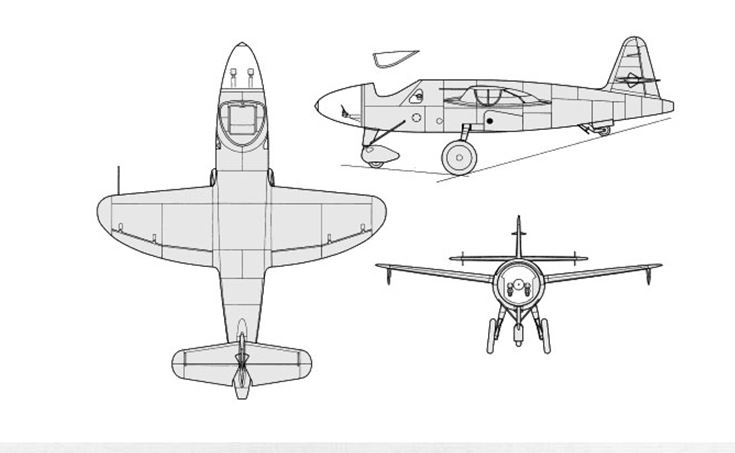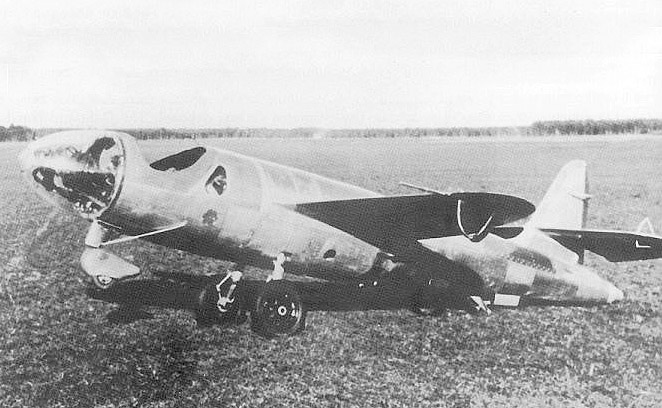Heinkel 176
(Sept 09)
When Douglas Downer-Smith came to the AEG he stressed that his talk was not just about the world’s first true rocket powered aircraft but about its history and the people involved.
The development of rocket propulsion had not been specifically mentioned in the WWI Treaty of Versailles, hence the German attempts to follow it up. From the emergence of rocket motors in the 1920s, leading to the entertainment value of such motors in trains, cycles and racing cars, the German army established the Kummersdorf research centre where Alexander Nietisch started work on designing rocket aircraft. Initially, the Air Ministry was not interested, but later inter-service co-operation involved such people as von Braun and Heinkel. Despite early safety concerns Hitler was given a demonstration of the aircraft in 1939.
The speaker mentioned the almost complete lack of documentary evidence to evaluate the effectiveness and performance of the craft. For some time, even its appearance was open to conjecture. He has therefore been using specially designed computer software to attempt a reconstruction to obtain an idea of the true size, weight and performance of the Heinkel 176. The most useful data has come from the Göttingen wind tunnel archives.
The tiny airframe was of wooden construction with a well-streamlined cockpit. To allow the pilot to escape in an emergency the whole nose could be jettisoned by a compressed air system. A drogue chute would deploy then the pilot could release the canopy and bale out.
Some very early film was also shown and a record of the diary of the pilot, Eric Warsitz, noted that the first flight on 20 June 1939, lasted all of 55 seconds.
The German Air Ministry saw no value in the project and cancelled the programme, preferring to concentrate on the turbo-jet powered Heinkel 178 (which first flew on 27 August 1939). Curiously, the 176 was sent to a museum in Berlin where it was destroyed in an air raid in 1944
The development of rocket propulsion had not been specifically mentioned in the WWI Treaty of Versailles, hence the German attempts to follow it up. From the emergence of rocket motors in the 1920s, leading to the entertainment value of such motors in trains, cycles and racing cars, the German army established the Kummersdorf research centre where Alexander Nietisch started work on designing rocket aircraft. Initially, the Air Ministry was not interested, but later inter-service co-operation involved such people as von Braun and Heinkel. Despite early safety concerns Hitler was given a demonstration of the aircraft in 1939.
The speaker mentioned the almost complete lack of documentary evidence to evaluate the effectiveness and performance of the craft. For some time, even its appearance was open to conjecture. He has therefore been using specially designed computer software to attempt a reconstruction to obtain an idea of the true size, weight and performance of the Heinkel 176. The most useful data has come from the Göttingen wind tunnel archives.
The tiny airframe was of wooden construction with a well-streamlined cockpit. To allow the pilot to escape in an emergency the whole nose could be jettisoned by a compressed air system. A drogue chute would deploy then the pilot could release the canopy and bale out.
Some very early film was also shown and a record of the diary of the pilot, Eric Warsitz, noted that the first flight on 20 June 1939, lasted all of 55 seconds.
The German Air Ministry saw no value in the project and cancelled the programme, preferring to concentrate on the turbo-jet powered Heinkel 178 (which first flew on 27 August 1939). Curiously, the 176 was sent to a museum in Berlin where it was destroyed in an air raid in 1944

